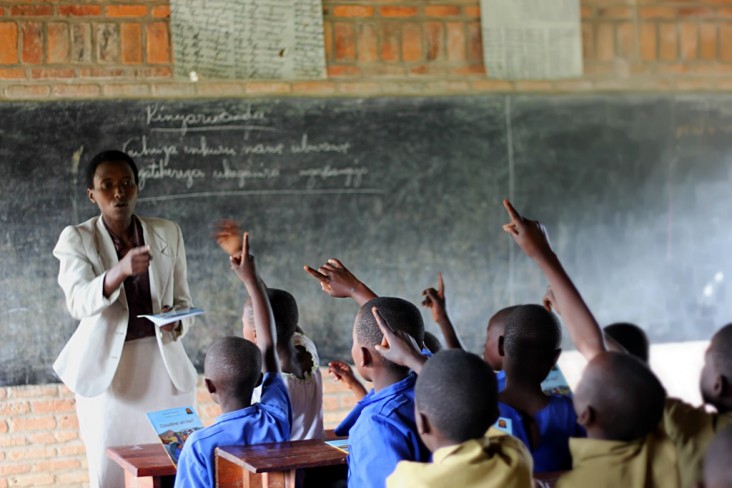
The Government of Rwanda’s Vision 2020 and Economic Development and Poverty Reduction Strategy lay out ambitious plans to transform Rwanda into a knowledge-based economy by building a skilled workforce that is able to compete both regionally and internationally. Education is key to this transformation, and Rwanda has achieved remarkable success in increasing access to education, with primary school net enrollment standing at 97 percent. USAID supports the Government of Rwanda to improve early-grade reading outcomes in Kinyarwanda. To support the acquisition of this foundational skill, USAID works in partnership with the Rwanda Education Board to enhance investments in teacher training, teaching and learning materials, and assessment to ensure that all children learn to read within their first few years of schooling.
Also, USAID works to meet the needs of youth who struggle to find stable employment. Young Rwandan job seekers in both rural and urban settings are challenged by poverty, social instability, and lack of financial and social capital, as well as limited skills and low levels of education. As a result of these challenges, 65 percent of youth ages 14-35 are underemployed.
Through its assistance in basic education and youth/workforce development, the U.S. Government is supporting the Government of Rwanda in its efforts to increase opportunities for Rwandan children and youth to succeed in schooling and the workplace.
Basic Education
The ability to read is the first and most crucial competency for success in school and the workplace. Research demonstrates that students learn to read most efficiently in the language they speak at home and understand, and that these skills transfer to reading in other languages. For this reason, USAID focuses on improving the literacy skills of children in the Kinyarwanda language in grades one through three. Learning to read well in these early grades will provide children the foundation to succeed in future schooling, including in the transition to English as the language of instruction in fourth grade. USAID programming includes the development and distribution of locally-produced student texts and teacher guides in Kinyarwanda; preservice and in-service training on literacy instruction for classroom teachers and head teachers; support for reading instructors nationwide through online materials and communities; advocacy for literacy; and development of reading assessment tools for improved teaching and informed policy-making.
In addition to improving reading instruction in schools, USAID is supporting national efforts to increase effective parent and community involvement to improve literacy learning and build a culture of reading in Rwanda.
Youth and Workforce Development
USAID supports programs that provide Rwandan youth with basic life skills, market-relevant work readiness training, tools, and knowledge that encourages entrepreneurship and linkages to continuing formal education, paid internships, and employment. USAID interventions also strengthen the efforts of local youth-serving organizations and support the Government of Rwanda’s Workforce Development Authority. For example, in 2014 the USAID-funded Akazi Kanoze Workforce Readiness Curriculum was integrated into the national technical and vocational education and training system.
Results
USAID’s education initiatives are achieving a large impact. Since 2011, USAID has published and distributed over 7 million textbooks and teacher guides for primary school students and teachers. In 2015 the Government of Rwanda adopted USAID-funded teaching and learning materials for Kinyarwanda and English instruction as part of its national curriculum. As a result of these interventions and other support, student reading achievement is improving. At the end of the 2015 school year, 10% more (65,000) first graders were able to read compared to previous years. Additionally, reading fluency has increased on average in all first, second, and third grade classrooms.
Over 20,000 youth have been equipped with workforce readiness skills, and over 60% of these youth have gained new or better employment, including self employment. Over 40% of the youth trained choose to pursue further schooling.








Comment
Make a general inquiry or suggest an improvement.